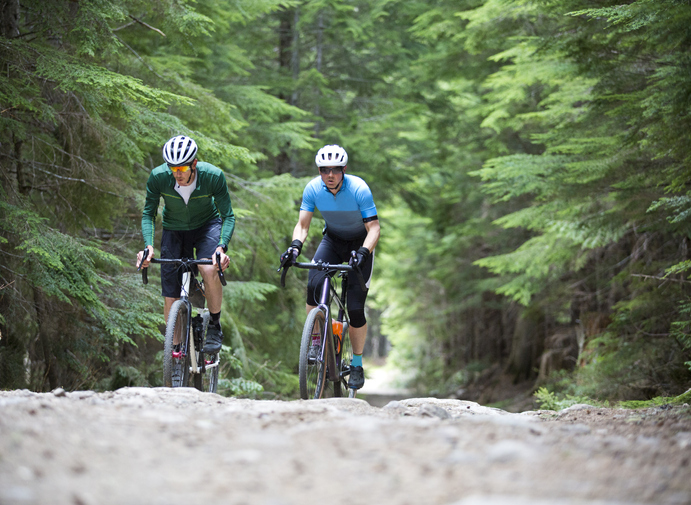Ready, set, gravel! How to get started on the latest cycling trend
Gravel riding is even more appealing as we head into the fall
 Photo by:
Getty Images
Photo by:
Getty Images
The year 2020 has seen many changes to how we go about our lives, especially for endurance athletes used to competing around the world. While many industries have been decimated amidst the Covid-19 pandemic, cycling has seen a huge spike in popularity. 2020 has been the year of the bike. The bike shortages across the globe show just how many people are taking up cycling amidst the closure of gyms and fitness facilities.
While working at a cycling pro shop in Toronto the past months I have sold every kind of bike imaginable. Hybrids were the first to disappear from our stock, especially those under a $1,000. Finding bikes for even $1,500 or less has become a challenge of late.
Not only is the new bike market hot right now, the used high-end market is also booming. When I’m asked, I encourage those looking for a new bike to look at purchasing the most versatile bike that fits their budget that will also be upgradeable in the future should they fall in love with the sport. For anyone who tells me they are looking to get into cycling and ride over 30 kilometers, I always show them a gravel bike.
So what is gravel riding? It is hardly a new concept – think about what people rode on before we had asphalt roads. The cycling world has recently adopted a new craze by creating gravel-specific bikes designed to be versatile enough to tackle almost any terrain.
It’s important to realize that gravel riding can be done on almost any bike – I used to ride a road bike with 25 mm tires on a gravel rail trail covered in an inch of snow from Hamilton to Brantford. Now I’m riding a bike with carbon frame that can take up to 40 mm tires that weighs just a few hundred grams more than my road bike. I always push those shopping for a new bike to look at something that will allow them to ride the most roads, trails and paths possible. It is so much fun to get outside these days on roads with fewer cars.
For triathletes who only own a race-day aero TT bike, I strongly encourage you to give a gravel-capable bike a try. Not only is it a nice to push through a workout without the constant buzzing of traffic on the road, but it opens up an endless number of unique cycling routes.
During my years of training full time around the world, my fondest memories are those rides that took me off the beaten path, including gravel roads and dirt paths atop plateaus at almost 3000 m in Mexico, to similar roads in the mountainous regions across Europe and Asia. While many of those gravel excursions were on team-issued road racing bikes, it’s a thrill to step over my gravel bike at home here in Canada.
Equipment
So what do you need to get onto the gravel roads and paths? Basically you just need a bike that you are comfortable riding over rougher terrain, and the ability to change a flat while in the middle of nowhere. Look for a bike that can handle 28 mm tires at a minimum. Thicker tires will provide a lot more comfort and stability. Brakes are also an important factor. While racing I was always on rim-brake bikes, but my current gravel machine features hydraulic disc brakes. While disc brakes aren’t a necessity, I would suggest finding a bike that can handle at least 32-mm-wide tires if you’re going to stick with a rim-braked bike.
You also need to make sure you can repair more than one flat on a ride – bring a few tubes with you and you’re probably better off with a small pump than a CO2 cartridge in case you have to deal with a few flats.
There are lots of frames on both the new and used market that could be your next gravel bike. If you do buy a used bike, make sure it is safe and in working condition. Since I spend a lot of my time now selling bikes, I always joke that you can’t ever have too many bikes. If your first bike is not a gravel-capable ride, the second one better be.
